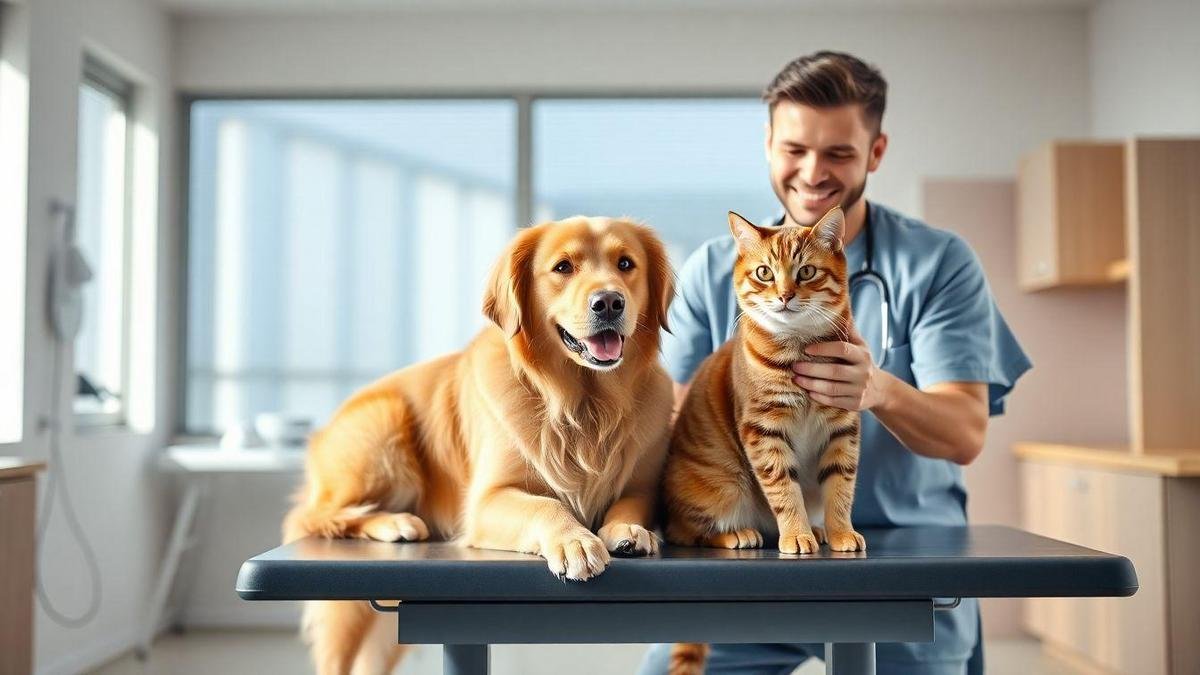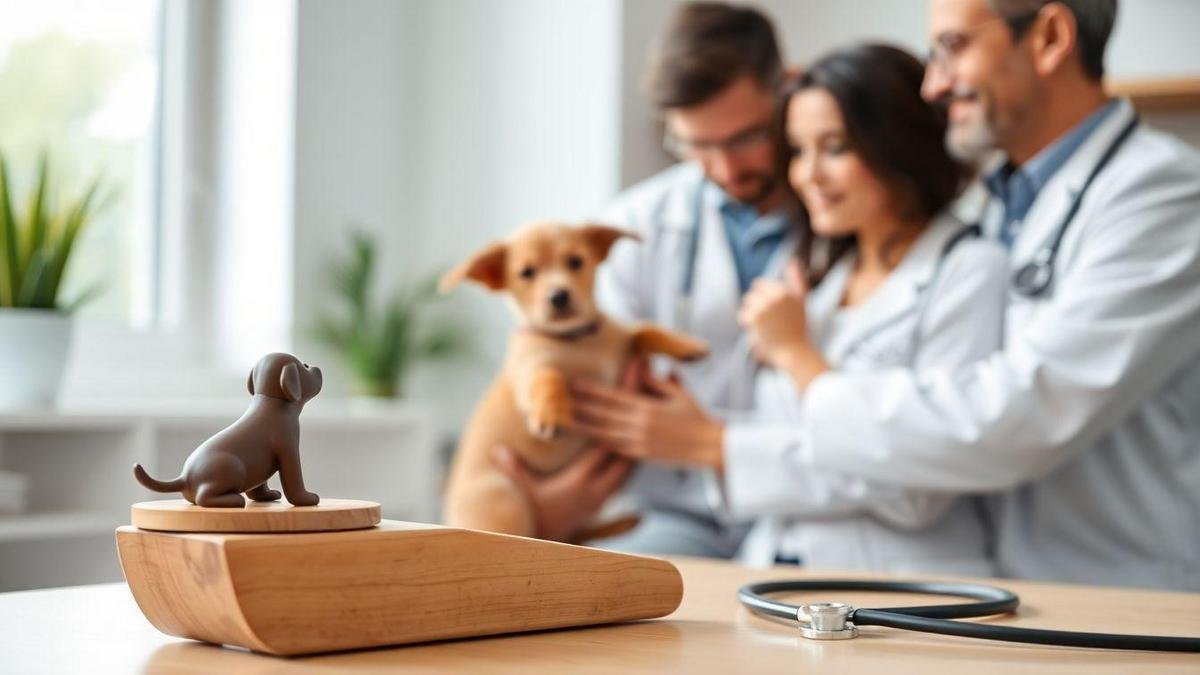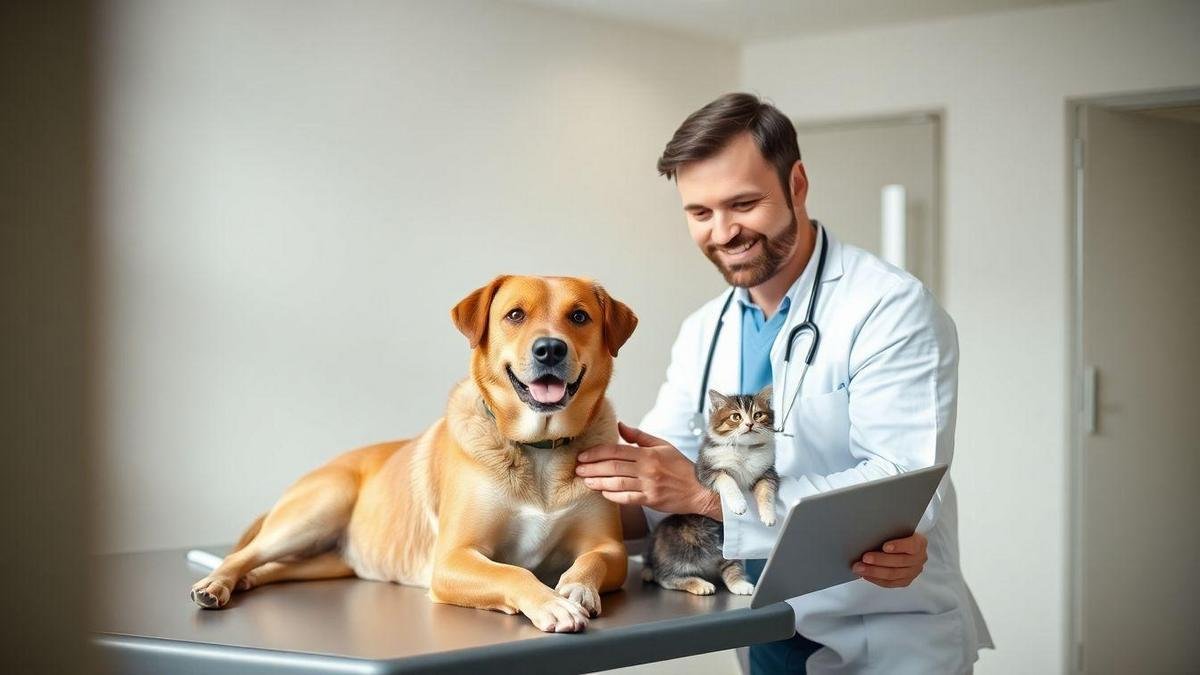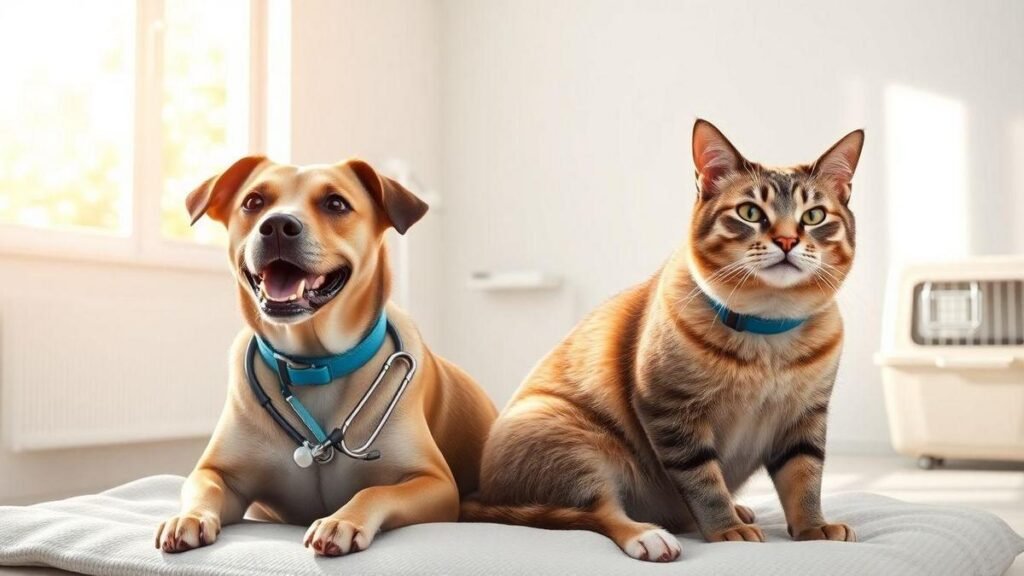Benefícios da castração em gatos e cães machos na saúde
I care about your pet. This guide walks you through the clear health gains—like a lower testicular cancer risk and often a longer life—and the everyday behavior benefits such as less aggression, reduced marking, and less roaming. You’ll learn how neutering helps prevent unwanted litters, eases shelter crowding, when to neuter, how to prepare for surgery, simple recovery steps, and how to watch weight and keep up long-term care with your vet. I keep facts practical so you can make the best choice for your pet.
Key takeaway
- Help your pet live longer and healthier.
- Eliminates testicular cancer risk.
- Reduces roaming, fighting, and spraying.
- Often makes pets calmer and easier to train.
- Prevents unwanted litters and reduces overpopulation.

Health benefits: cancer risk, lifespan, and fewer injuries
Testicular cancer and long-term outcomes
Neutering removes the testes, so the risk of testicular cancer is effectively zero. That’s a direct, significant health win. Neutered males also tend to roam less, fight less, and therefore have lower exposure to bite-related infections and road accidents—factors that contribute to a longer life.
| Condition / Outcome | Intact males | Neutered males |
|---|---|---|
| Testicular cancer risk | Present | Zero |
| Roaming / escape risk | Higher | Lower |
| Fight-related injuries | Higher | Lower |
| Exposure to bite infections | Higher | Lower |
Lifespan and other gains
Many studies report neutered pets live months to years longer depending on species and breed. Additional benefits include calmer behavior and fewer hormone-driven problems (e.g., some prostate issues). Talk with your vet about optimal timing for your pet.
Quick fact: Neutering eliminates testicular cancer and can improve overall health.

Behavioral benefits (and the role of Benefícios da castração em gatos e cães machos na saúde)
When I explain behavior, I use the phrase Benefícios da castração em gatos e cães machos na saúde because owners often ask what will change at home. Neutering usually reduces sex-driven behaviors but is not a cure-all—training and socialization remain essential; consider building trust and routines with guidance like the tips in how to build trust with your pet.
Reduced aggression in dogs
Testosterone can drive inter-male aggression. After neutering many dogs become calmer, respond better to commands, and pose less risk to family members and trainers. Neutering helps, but it should be combined with consistent training.
Urine marking and roaming
- Male cats: less urine marking after neutering; also follow basic litter-box setup advice such as in preventing litter box avoidance.
- Male dogs: reduced roaming/searching for mates, lowering the risk of accidents and fights.
| Behavior | Typical before neuter | Typical after neuter |
|---|---|---|
| Aggression between males | Higher | Often lower |
| Urine marking (males) | Frequent | Less frequent |
| Roaming/searching for mates | Common | Reduced |
| Mounting / sexual behaviors | Frequent | Less |
| Need for training | High | Training becomes easier |
Note: younger neutering (puppies/kittens) often yields stronger behavioral changes, though older pets can still improve.

Community impact: preventing unwanted litters
I emphasize preventing unwanted litters because one litter can multiply problems quickly. The phrase Benefícios da castração em gatos e cães machos na saúde also reflects community benefits: fewer strays, less shelter crowding, fewer euthanasias, and improved public health. Neutering is one important part of a larger approach to responsible pet care highlighted in our broader guide to caring for pets.
| Situation | Result |
|---|---|
| Unneutered males | More mating → more litters → higher shelter intake |
| Neutered males | Fewer litters → fewer homeless animals → less shelter crowding |
Fewer strays mean fewer bites, lower disease spread, and safer streets. Preventing litters is a practical step with large ripple effects and complements rescue support strategies like those covered in helping recently adopted rescue pets.

Timing: when to neuter to balance risks and rewards
I balance risks and rewards for each pet—considering breed, size, and lifestyle—and recommend discussing timing with your vet.
| Age window | Main benefits | Main risks | Quick note |
|---|---|---|---|
| Early (< 6 months) | Lowers chance of testicular cancer, reduces roaming and unwanted litters | May raise joint issue risk in some large breeds | Good for cats and many small dogs |
| Typical (6–12 months) | Balances behavior control and growth | Fewer trade-offs for many breeds | Most common choice |
| Later (> 12 months) | More natural hormone exposure; may reduce some orthopedic risks in large dogs | More chance of marking, roaming, fights before surgery | Consider for large-breed growth concerns |
Early neutering prevents cancer and many behavior issues, but for some large breeds delaying can reduce certain orthopedic risks. Weigh the home environment: if you can’t manage an intact male’s roaming or aggression, earlier neuter may be safer.

Surgery preparation and recovery
Short-term risks and how vets reduce them
| Short-term risk | How vets lower it | What to watch for at home |
|---|---|---|
| Bleeding | Careful technique, discharge check | Fresh blood, swelling |
| Infection | Sterile tools, wound care, antibiotics if needed | Redness, pus, bad smell |
| Pain | Anesthesia post-op pain meds | Whining, hiding, not eating |
| Vomiting / nausea | Anesthesia monitoring, anti-nausea meds | Repeated vomiting, lethargy |
| Reaction to anesthesia | Monitoring vitals | Unsteady walking, prolonged grogginess |
Home care checklist
- Limit activity: no running/jumping for 7–14 days. Arrange a calm recovery space following tips from how to create a pet-friendly indoor space.
- Check the incision twice daily for swelling or redness.
- Use an e-collar or recovery suit to stop licking; guidance on managing alone time is available in preparing your pet for indoor alone time.
- Give pain meds exactly as prescribed.
- Keep the area clean and dry; no baths until vet ok.
- Offer small meals at first if nauseous.
- Call the vet for fever, heavy bleeding, or refusal to drink.
Recovery timeline:
- Days 0–2: quiet space, watch breathing, first pain dose.
- Days 3–7: short leash walks, check incision twice daily.
- Days 8–14: gradually increase play if incision looks good.
- >14 days: vet check if stitches remain or issues appear.
Proper pain control, rest, and follow-up help a smooth recovery. For general pre- and post-op home preparation, see our broader home preparation tips.

Long-term care: weight, activity, and preventive checks
Preventing obesity
Neutered males often slow down and may gain weight. I weigh pets monthly and monitor body condition.
| What I track | How I do it | Why it matters |
|---|---|---|
| Weight | Monthly on the same scale | Spot weight gain early |
| Body condition | Feel ribs; look at waist | Better than numbers alone |
| Daily activity | Minutes of play or walk | Burns calories, boosts mood |
| Food intake | Measure portions | Prevents overeating |
Quick tips:
- Measured meals, not free feeding—practical food and water area tips are in keeping food and water areas safe.
- Aim for ~30 minutes of activity daily for larger dogs; cats: two 10–15 minute play sessions. Boredom-busting and indoor activity ideas are available in preventing indoor cat boredom and handling zoomies.
- Watch for reduced play or slow movement—early red flags.
Preventive care to support longer life
Regular vet exams, up-to-date vaccines, dental care, and monitoring of mood/urination help catch issues early. See the practical flow of routine care in the importance of routine vet visits.
| Check | When | Signs to watch |
|---|---|---|
| Vet exam | Yearly (or every 6 months if older) | Lumps, limping, weight change |
| Vaccines | As vet recommends | Coughing, sneezing, lethargy |
| Dental | Brush weekly; vet clean yearly | Bad breath, drooling, not eating |
| Urinary health | Watch litter box / urine habits | Straining, blood, frequent urination |
| Behavior | Weekly notes on mood/play | Aggression, hiding, loss of interest |
Keep a small health folder with vaccine dates, weight logs, and notes—this makes vet visits more effective. For an overall checklist and ongoing care ideas, our care checklist can help.
Summary: regular checks, measured feeding, and daily play help the long-term Benefícios da castração em gatos e cães machos na saúde last.
Conclusion
Neutering is a clear health intervention: it removes the risk of testicular cancer, often adds months to years to life, and reduces roaming, fights, and urine marking. Day-to-day wins include calmer pets, easier training, and fewer unwanted litters—benefiting shelters and the community. Timing and care matter: talk with your vet, prepare for surgery, follow recovery instructions, monitor weight, and keep up preventive care. If you love your pet, neutering is a practical, high-impact way to protect them. For more practical guides, visit our pet care guide.
Frequently asked questions
Q: What health problems does neutering prevent in male cats and dogs?
A: It removes testicular cancer risk and lowers some prostate issues, reduces roaming/fight-related injuries, and can decrease infections from fights.
Q: Does neutering change my pet’s behavior?
A: Yes—expect less marking, less roaming, and often calmer social behavior. It won’t fix fear-based or resource-guarding aggression alone; continue training and socialization (see tips on building trust).
Q: When is the best age to neuter my pet?
A: A common recommendation is around 6 months, but timing depends on breed, size, and lifestyle. Discuss the Benefícios da castração em gatos e cães machos na saúde for your specific pet with your veterinarian.
Q: Will neutering make my pet gain weight?
A: Metabolism can slow after neutering. Prevent weight gain with measured portions, daily activity, and monthly weight checks—see safe feeding tips in food and water area guidance.
Q: What are the long-term benefits of neutering for overall health?
A: Less cancer risk (testicular), fewer injuries and infections from roaming/fighting, potential for longer lifespan, and reduced overpopulation—core parts of the Benefícios da castração em gatos e cães machos na saúde.
If you have more questions or want a personalized plan, talk to your veterinarian.






